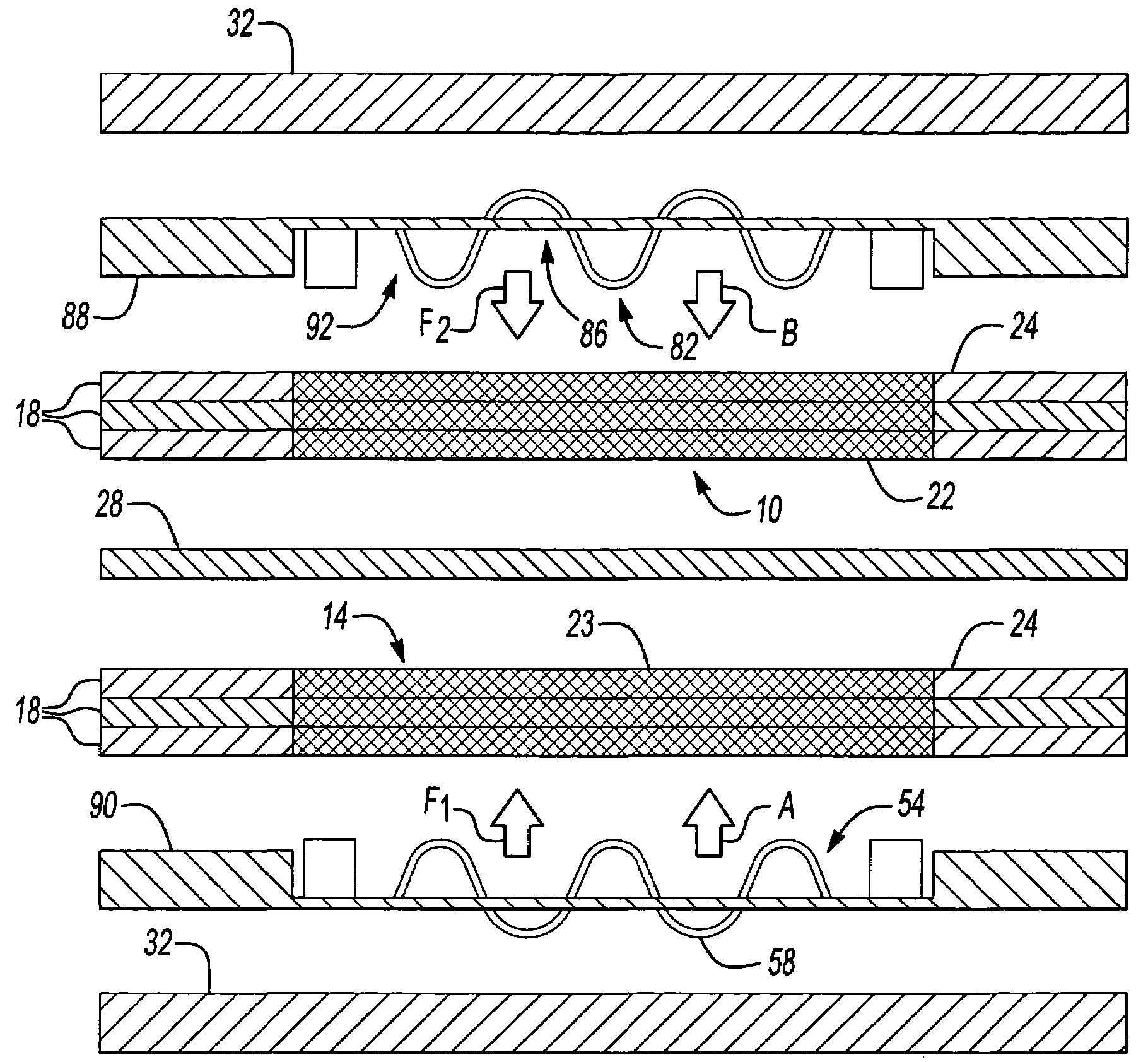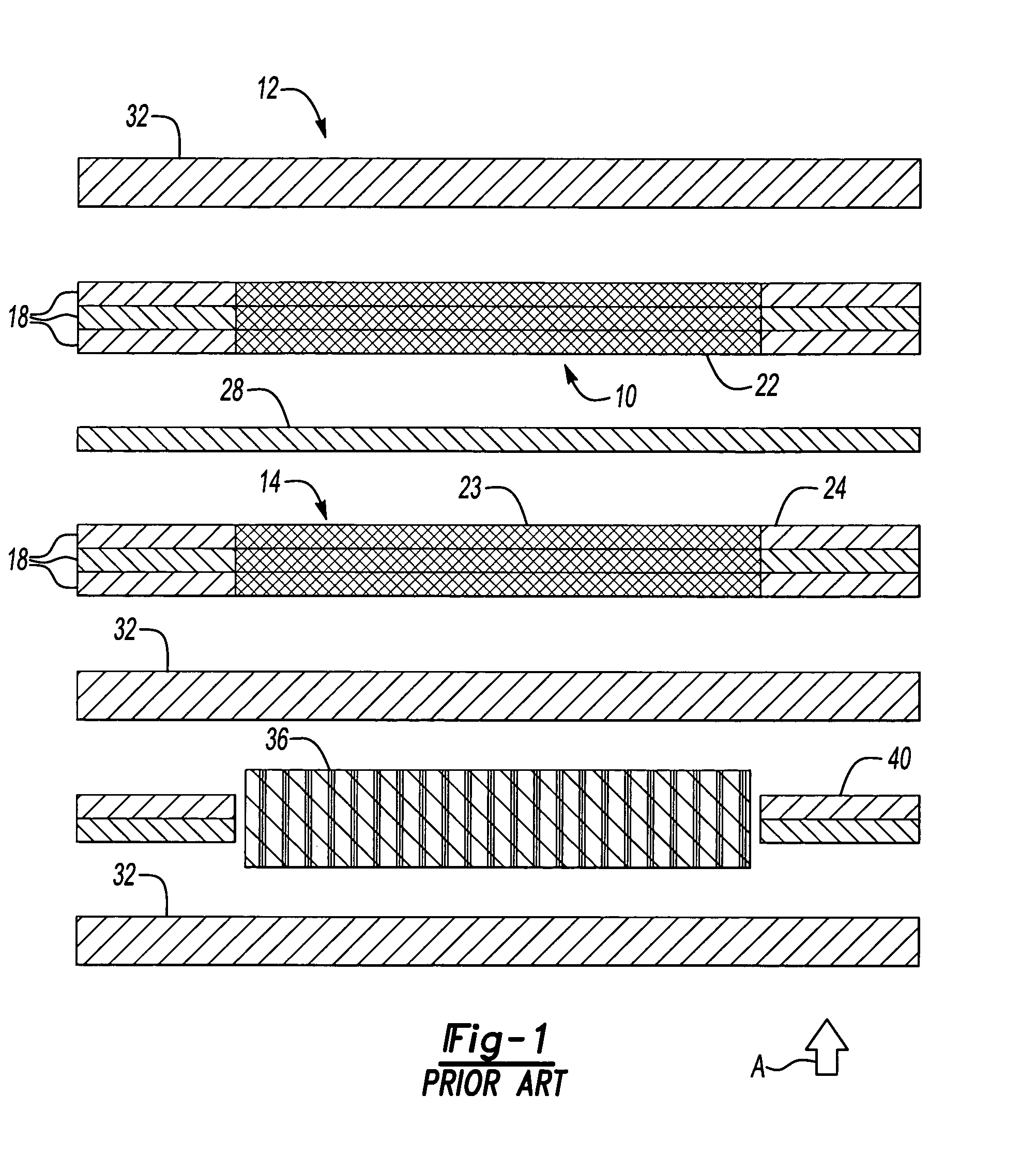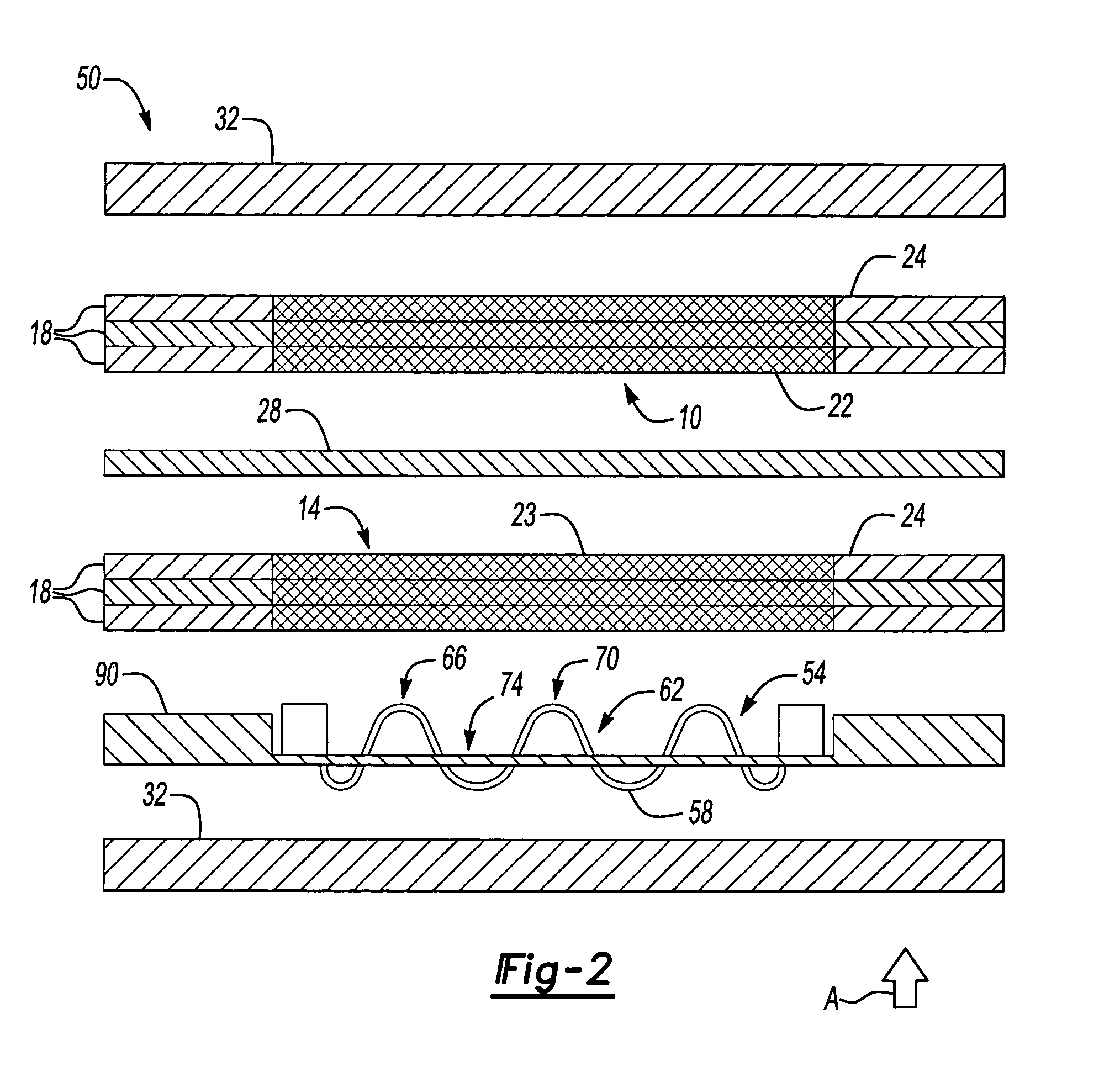Assembly for maintaining compression for electrical contact of the active area of an electrochemical cell
a cell and active area technology, applied in the field of cell structure of an electrochemical cell, can solve the problems of difficult analysis and manufacture of current pressure pads, difficult to achieve accurate and consistent spring rates, and the need for springs to provide only sufficient preload
- Summary
- Abstract
- Description
- Claims
- Application Information
AI Technical Summary
Benefits of technology
Problems solved by technology
Method used
Image
Examples
Embodiment Construction
[0020]FIG. 2 illustrates an exploded view of inventive electrochemical cell structure 50, here an electrochemical cell. Electrochemical cell structure 50 may comprise anode cavity 10 and cathode cavity 14 sandwiched between separator plates 32. Like the prior art, anode cavity 10 and cathode cavity 14 comprise plates having mesh screens with openings forming an active area 22 for anode cavity 10 and an active area 23 for cathode cavity 14. Inactive area 24 of anode cavity 10 and cathode cavity 14 form a fluid barrier to contain fluid within active area 22 and active area 23. Anode cavity 10 and cathode cavity 14 sandwich electrochemically conductive medium 28, such as an ion-exchange membrane or liquid contained in a porous matrix. In contrast to known assemblies, electrochemical cell structure 50 has a spring, resilient member 58 to bias cathode cavity 14 towards anode cavity 10 in the direction of arrow A. In the example shown, resilient member 58 is a wave spring characterized by...
PUM
| Property | Measurement | Unit |
|---|---|---|
| electrically conductive | aaaaa | aaaaa |
| spring force | aaaaa | aaaaa |
| ionically conductive | aaaaa | aaaaa |
Abstract
Description
Claims
Application Information
 Login to View More
Login to View More - R&D
- Intellectual Property
- Life Sciences
- Materials
- Tech Scout
- Unparalleled Data Quality
- Higher Quality Content
- 60% Fewer Hallucinations
Browse by: Latest US Patents, China's latest patents, Technical Efficacy Thesaurus, Application Domain, Technology Topic, Popular Technical Reports.
© 2025 PatSnap. All rights reserved.Legal|Privacy policy|Modern Slavery Act Transparency Statement|Sitemap|About US| Contact US: help@patsnap.com



